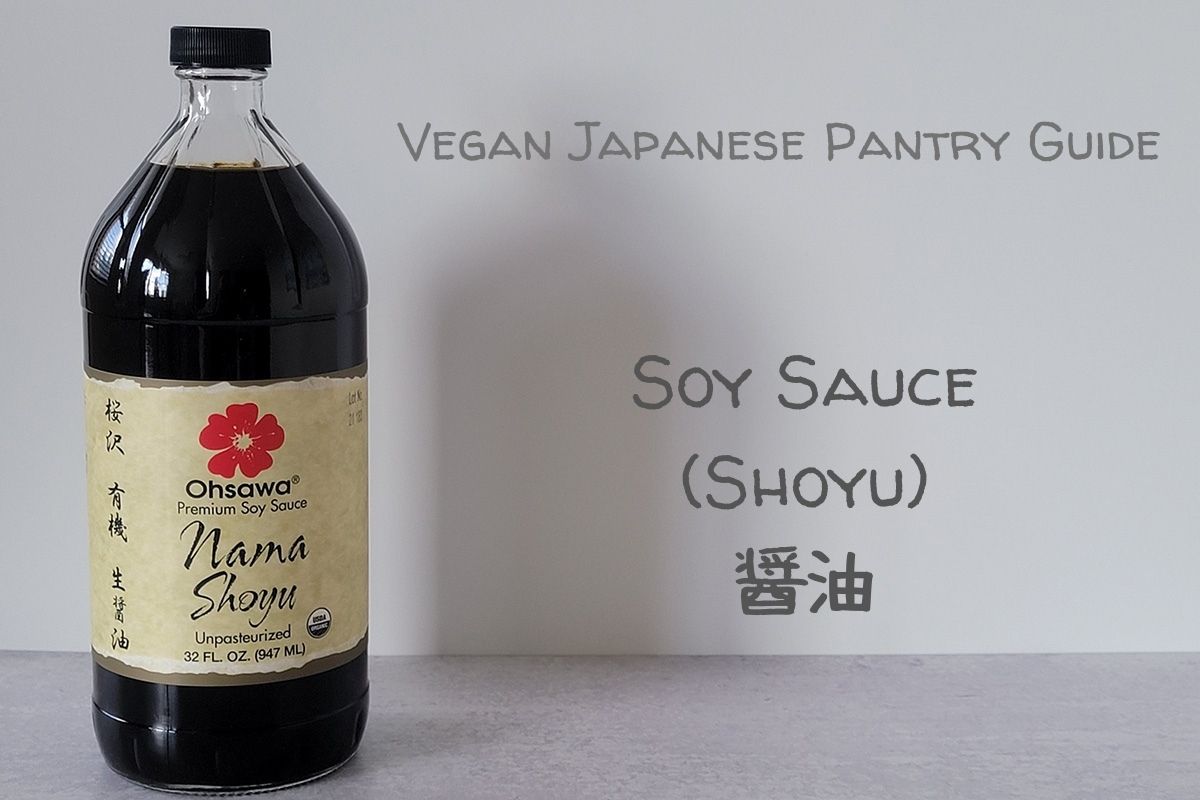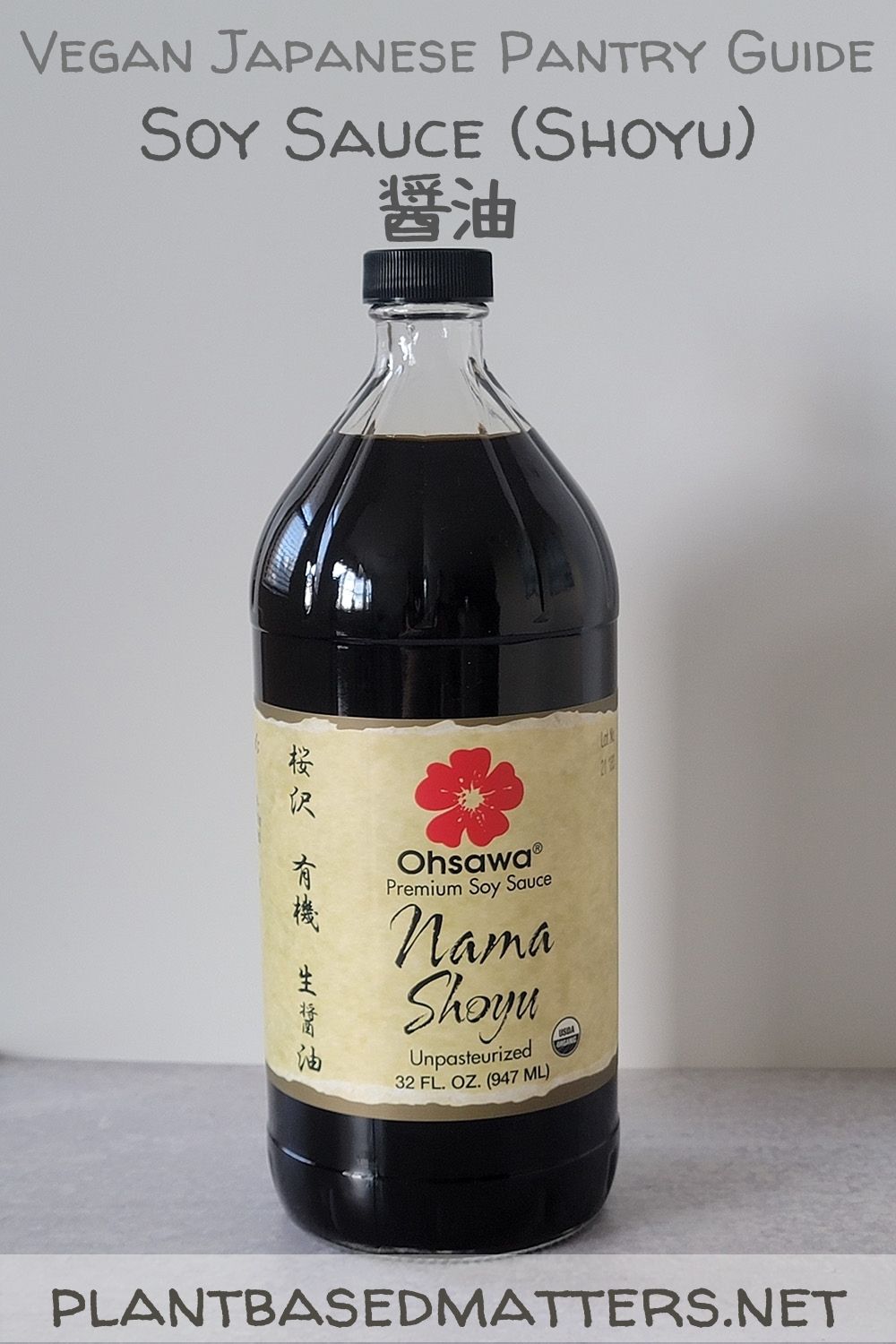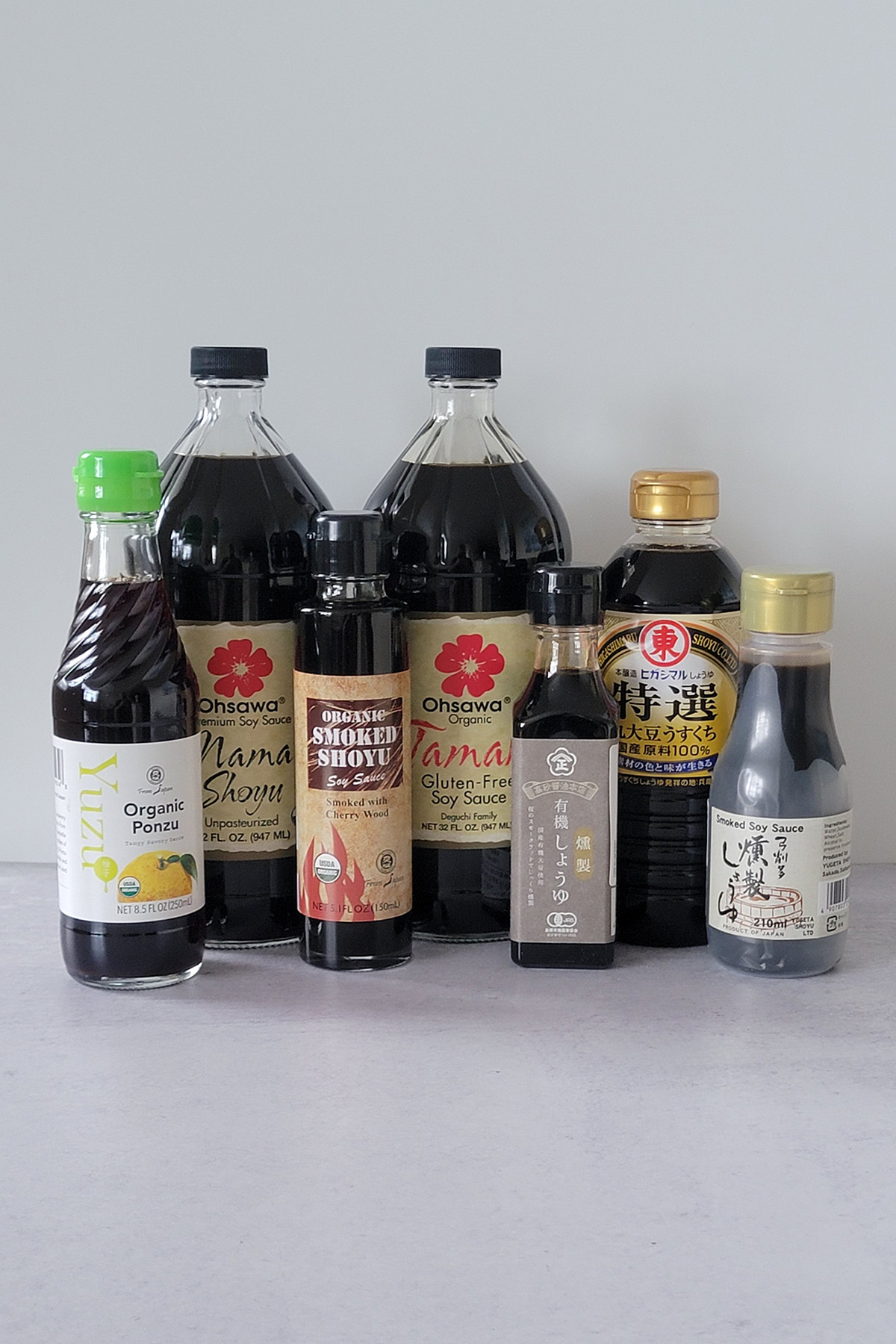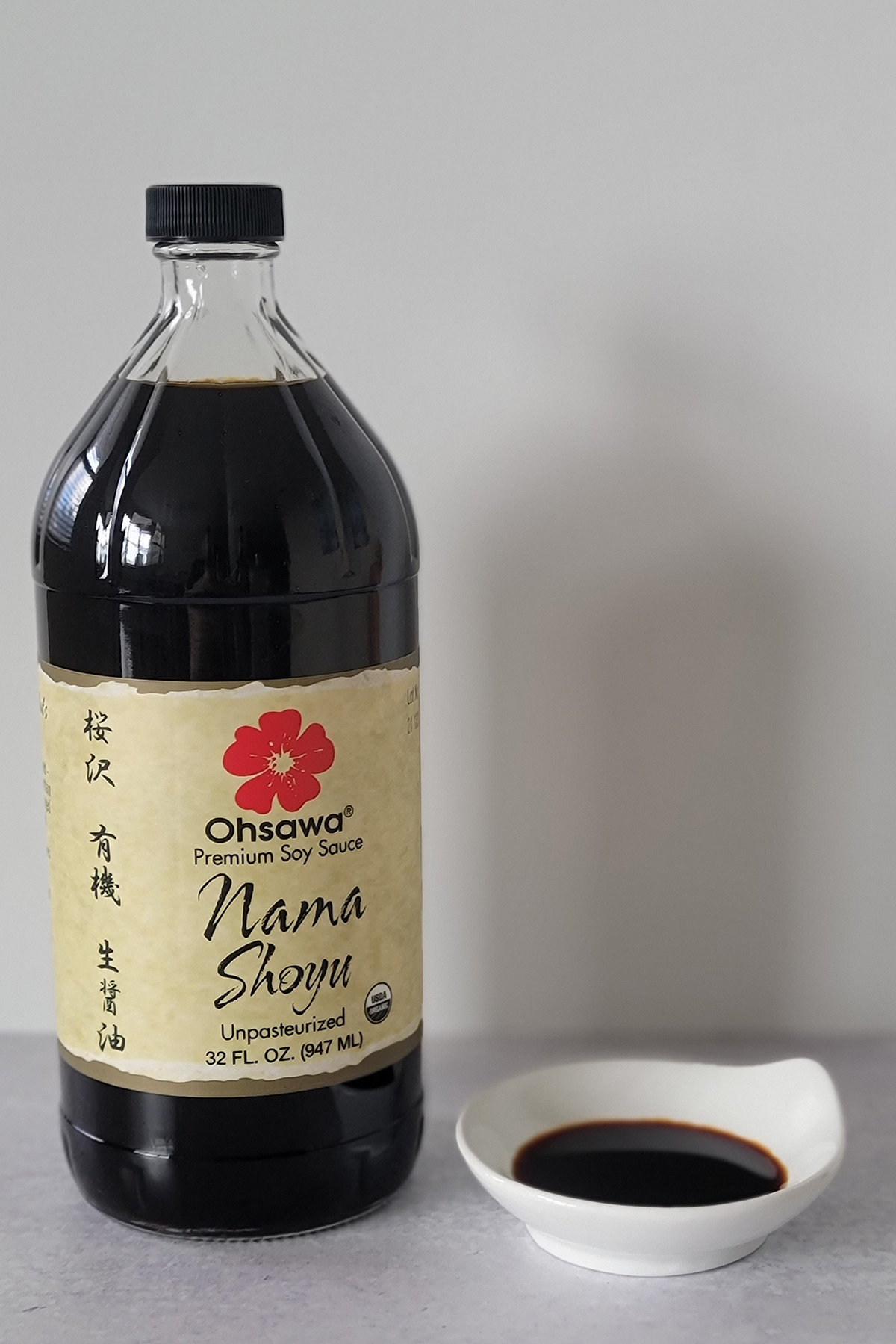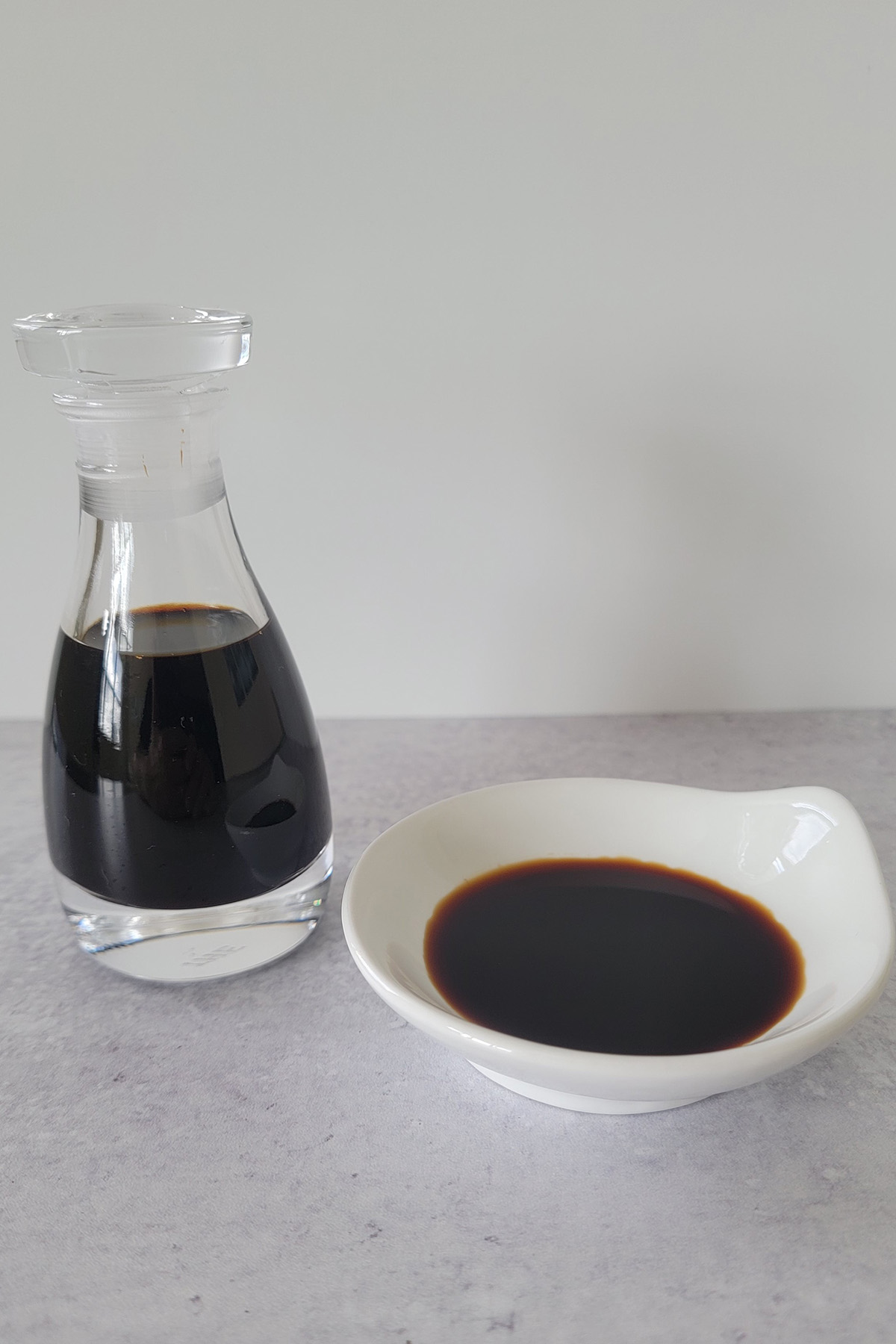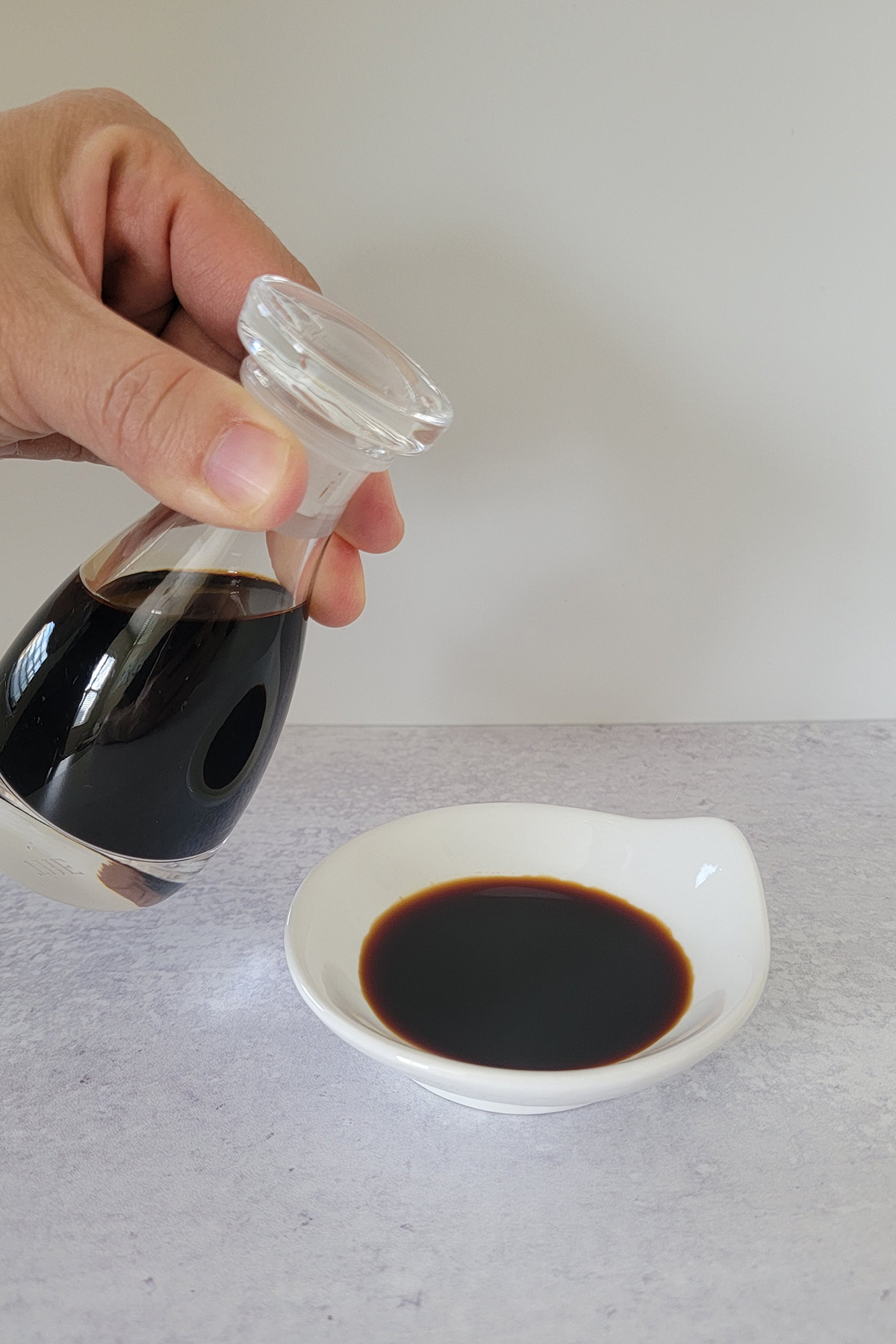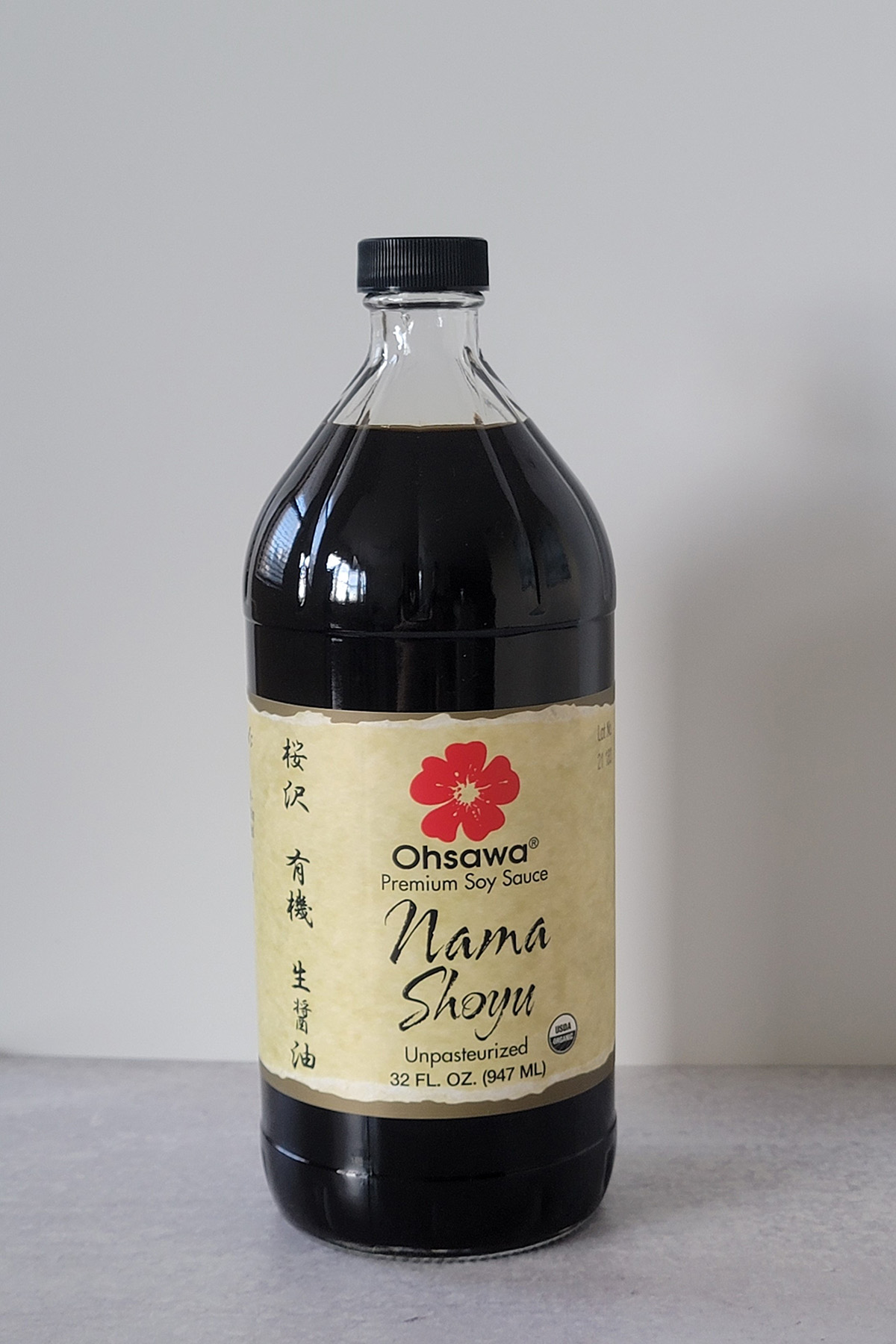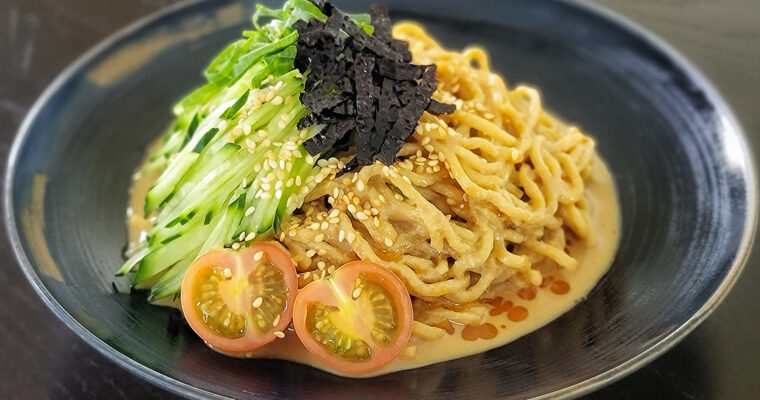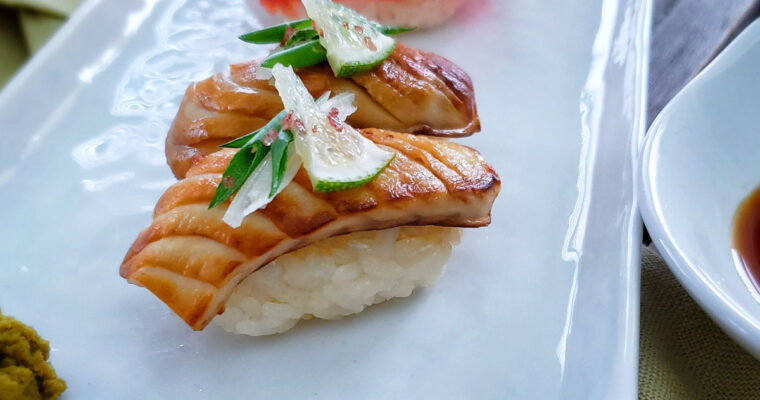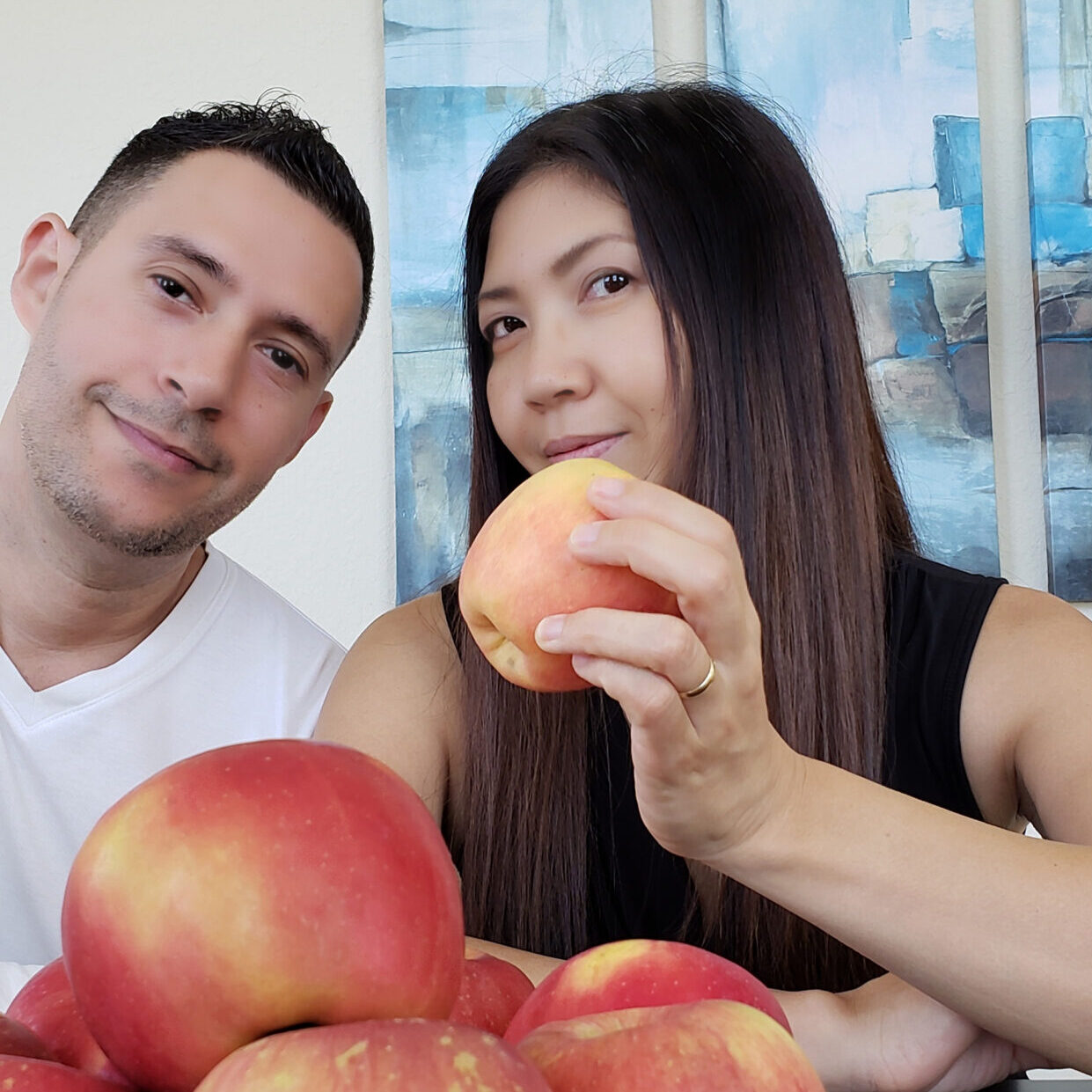Last Updated on June 3, 2023
If you have to pick one of the most used Japanese condiments or seasonings that’s naturally vegan, it definitely is Soy Sauce known as Shoyu. There are a couple of different types of soy sauce you may want to have in your vegan Japanese pantry such as multipurpose regular soy sauce, light soy sauce, and smoked soy sauce. In this post, the highlight is on the multipurpose soy sauce that you can use in just about any Japanese cooking.
The Soy Sauce Family
There are several types of soy sauce products that you can use for different purposes. Some of the examples are:
- Soy sauce
- Light soy sauce
- Tamari
- Smoked soy sauce
- Ponzu
- White soy sauce
- White tamari (technically not “soy” sauce but similar)
Now, let’s talk about soy sauce!
What’s Soy Sauce?
Overview
Soy sauce is a aged & fermented liquid condiment made from soybeans that’s commonly used in Japanese cuisine as well as many Asian countries. This is the most typical multipurpose soy sauce that’s commonly used which you’re probably using in your everyday cooking. In Japanese, it’s called shoyu [醤油] or koikuchi shoyu [濃口醬油] in comparison to light soy sauce or usukuchi shoyu [淡口醤油.]
The color of soy sauce is rich and dark. It’s typically aged for about a year and the percentage of sodium in regular soy sauce is about 16 % which is slightly lower than light soy sauce (usukuchi soy sauce) which is 18%.
Ingredients
The basic ingredients of soy sauce are:
- Soybeans
- Water
- Wheat
- Salt
- Koji (aspergillus oryzae)
Process
Brief process of the making of soy sauce is;
- Soybeans are soaked and steamed
- #1 is mixed with crushed dry-roasted wheat and koji mold (aspergillus oryzae)
- Salted water is added to #2 which becomes unrefined soy sauce called moromi then aged/fermented
- Pressed and heated for pasteurization then filtered or just filtered without pasteurization *
- Bottled
The actual process may vary depending on the types of soy sauce or products.
* Typically, soy sauce is heated through to pasteurize after the being pressed except for “pure soy sauce”, “fresh soy sauce” or “mana-shoyu.” Those are the types of soy sauce with no heat applied. In other words, the soy sauce is “alive” to retain more aroma and umami, enzymes, and the pure taste of soy sauce. It’s delicious!
Taste
When you taste soy sauce by itself, the first thing you will taste is, of course, the intense saltiness. But once you pass the saltiness, you may start tasting another layers such as sweetness and umami. This is more apparent especially in good quality artisanal soy sauce.
Here is the thing. If you think all soy sauce products taste the same, think differently starting today and try as many different products as possible that you can find.
Let’s put it this way, If you like wine, you know that not all wines taste the same although the process of making wines are technically universal. Part of fun of drinking wine is to try different ones to compare. Or perhaps to find ones that suit your preference and to find a good paring wine for the food you eat with.
Soy sauce is exactly the same! You can also use different soy sauce for different types of dishes to bring out the best flavor possible.
Just like wine tasting, why not try “soy sauce tasting” next time? You will be surprised how each product can taste slightly (or totally) different from one another!
Ways to Use
Here are some of my recipes that features soy sauce.
[envira-gallery id=”8702″]
Soy sauce can be used in many different ways. You can use it as;
- Dipping sauce as is
- Mixing with other ingredients to make dressings
- Seasoning for stir-fries
- Secret ingredient as an umami enhancer
- Marinade
Also, do you know soy sauce is not just for Japanese or Asian cooking? Here is the list of some of the common & uncommon condiments (oils) that you can combine with soy sauce to create delicious flavor:
- Butter (vegan)
- Extra virgin olive oil
- Sesame oil
- Balsamic vinegar
- Rice vinegar
- Tahini (or any sesame paste)
- Peanut butter
- Dijon mustard
- Tomato sauce
- Ketchup
- Wasabi
- Rayu (Japanese chili oil)
- Japanese mustard (karashi mustard)
- Curry powder
- Gochujang (Korean fermented spicy red chili paste)
- Doubanjang (Chinese fermented chili bean paste)
How to Store
Soy sauce is high in sodium so it has a pretty long shelf life. That said, oxidization will slowly change the flavor profile. Just like any other food, it’s best to consume as soon as possible once it’s open.
Another thing to consider is by a small size bottle if you don’t use it often in your cooking. This may not be cost effective but there is nothing like having a fresh tasting ingredient to cook with rather than being forced to use an old one.
Here is how I store my soy sauce. I do exactly what my mom would do back in home.
- Keep an unopen bottle in a dark place to avoid direct sunlight.
- Once it’s open, always cap it tightly and store in the fridge.
- I transfer and adequate amount to a soy sauce dispenser to use on the table and kitchen. I also keep the dispenser in the fridge when I’m not using it.
Since I use soy sauce often, I buy the one comes in a large glass bottle (32 fl oz/947 ml.) But I have to say it’s not so convenient to use it out of a big heavy bottle especially when I want to measure and have control over how much to use.
That’s why I transfer some in a soy sauce dispenser and it’s very practical. If you haven’t done so, I highly recommend trying it!
Where to Buy
Since soy sauce is widely available, you can find soy sauce pretty much at any grocery stores without having to go to Asian grocery stores.
That said, I’ll definitely recommend trying different products to taste the difference and to find your favorite! I personally recommend buying organic soy sauce to avoid GMO.
My go-to everyday multipurpose soy sauce is Ohwasa Organic Nama Shoyu from Gold Mine Natural Foods. It’s a product of Japan, unpasteurized, organic, umami-rich and really delicious!
I recommend trying “real” Japanese soy sauce for you to stock up your authentic vegan Japanese pantry. This is a general tip for shopping Japanese groceries or pantry items which is to get the products that labels as “Product of Japan” on the back of the package. Often times, what appears to be a “Japanese” product is actually produced in another country. Always check the label!
Let me know in the comment sections below if you have any questions or other recommendations!
